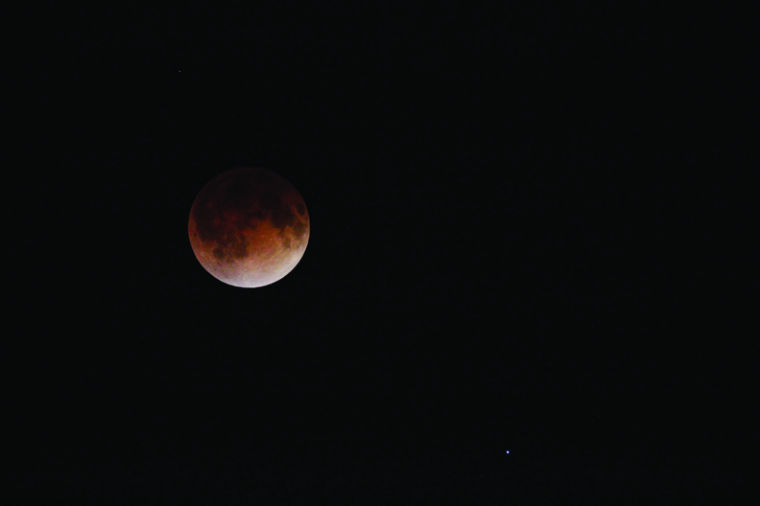Supermoon to be visible during lunar eclipse Sunday
The moon glows reddish-brown during a lunar eclipse on April 15, 2014. Students will get a free, hands-on experience to observe a supermoon lunar eclipse through a telescope Sunday in the NIU Observatory.
September 21, 2015
Students will get a free, hands-on experience to observe a supermoon lunar eclipse through a telescope Sunday in the NIU Observatory.
The combination of a supermoon and lunar eclipse will not be seen again until 2033, said NIU Observatory manager Greg Alley. The free event will be held 7:30 p.m. to 11:30 p.m. in Davis Hall.
A lunar eclipse, also known as a blood moon, occurs when the moon orbits directly behind the Earth and the sun. The blood moon gets its name from its red appearance cast by the Earth’s shadow.
A supermoon occurs when the moon makes its closet orbit to the Earth during its elliptical orbit. Thus, the supermoon appears 14 percent larger than normal.
Go to the Observatory’s Facebook page for more information.







